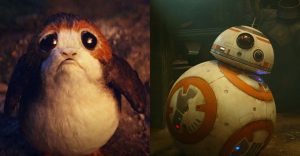Demonic: The Real-Life Inspiration for Blomkamp’s Creepy Bird Demon

Warning: The following contains SPOILERS for Neill Blomkamp’s Demonic.
Neill Blomkamp’s Demonic features a bone-chillingly creepy bird demon — but where did Blomkamp find the inspiration for the film’s antagonist? Multiple cultures across history have had some kind of supernatural bird figure in their mythos, many demonic or monstrous in nature. Avian figures are almost universal, giving Blomkamp plenty of inspiration to draw from for his character. Dipping into this mythological well to create his monster resulted in something truly chilling.
Demonic follows the story of a woman named Carly (Carly Pope) as she tries to navigate her complicated relationship with her mother, Angela (Nathalie Boltt). When Carly’s friend, Martin (Chris William Martin), informs her Angela is in a coma, Carly decides to visit in an attempt to get some answers and be done with her mother once and for all. Martin tried to warn Carly that he believed Angela was possessed, but Carly brushed the possession theory off as a hoax. But when Carly agrees to speak to her comatose mother through a simulation program, she inadvertently releases the demonic bird spirit that had been possessing her mother for years, compelling her to commit heinous acts. When the demonic spirit follows her home and threatens the life of her best friend, it’s up to Carly and Martin to put an end to the diabolical spirit for good.
Despite its creepy antagonist, Blomkamp’s Demonic hasn’t been met with a very warm reception from audiences or critics. While the movie had a lot of potential, it frequently moved from one storyline to another, never lingering long enough to fully develop any one idea between the possessed VR technology, the black-ops team from the Vatican, and the horrifying bird demon. The bird demon is one of the film’s only saving graces, providing some of the only truly eerie scenes throughout Demonic. With Neill Blomkamp having movies like Chappie and Elysium under his belt, audiences were ultimately underwhelmed by his foray into horror.
Blomkamp’s Demonic Inspiration

The avian demon of Demonic took the form of a half-bird, half-man, a humanoid combination that is frequently seen in mythology, such as the deity Thoth from the Egyptian pantheon. The demon strikes a tall and intimidating figure, walks on two legs, and brandishes two terrifyingly clawed hands, all of it topped with the head of a black bird, his beak arcing into a long, sharp point. Yet, the demon also had the ability to disguise itself as a human, slipping into Carly’s house under the guise of her best friend, Sam. It certainly isn’t a figure one would want to encounter in the dark.
Blomkamp revealed that his nightmarish bird figure wasn’t drawn from any one source. When asked where the inspiration for the demon came from, the District 9 director simply explained that it was a variety of sources. Instead of drawing the design from any one figure, the design process was more of a subconscious one, with his interest in crows and ravens combining with the timely horror of medieval plague doctors. The silhouette of the bird demon certainly mirrors that of the mask plague doctors wore to combat the Black Plague, and the bird mask the creature wears while trying to imitate Sam creates an even stronger connection with the plague doctor aesthetic. The scene where a masked, contorted Sam chases Carly through the house is a ghastly one made worse by the creepy plague mask she donned. History and mythology certainly have more than enough figures for Blomkamp to have drawn upon.
The Morrigan

Throughout the history of lore — and horror movies — crows have held deep symbolism and significance. The Morrigan, the “Phantom Queen” or “Great Queen,” is a figure of Irish folklore. She’s portrayed sometimes as an individual and sometimes as a triad of sisters, i.e. a triple goddess, the Morrigan is a figure associated with one’s fate in war, whether it would be glory or doom. While the Morrigan often resides in the form of a woman, she also frequently takes on the form of a crow to deliver omens of fate to soldiers on the battlefield. In her crow form, referred to as the Badb, she could influence the direction of war by instilling courage, bravery, or fear. The Morrigan is a figure of warning, similar to that of the banshee, as her appearance frequently spelled out death for soldiers. She could appear in visions, sometimes washing the bloody clothes of the doomed soldier, or as a crow flying overhead. Very rarely, she would grace the battlefield as a warrior herself to show her favor. She also has strong ties to the land as her shapeshifting is meant to represent her affinity with nature.
Caim

A Gaelic figure derived from the biblical Cain, Caim (or Caym) is considered the “president” of Hell in the Ars Goetia, part of the Lesser Key of Solomon. Once serving in the order of Angels, Caim was given dominion over 30 legions of demons after falling from grace. Caim takes on two forms, as is common with many pagan deities. At times, he is a man, brandishing a sharp sword, at other times he takes the humanoid form of a black bird called a thrush. He is considered the great disputer of Hell, giving men the ability to understand animal voices, including birds, and the sounds of the water. Like many deities, he’s prophetic, but like many demons, though he only speaks truth about the future, the truth can drive a person madder than a lie. This aspect of him revealing unpleasant fates is symbolized by him often standing atop a pile of burning ash or coal as he speaks, remnants of Hell. Along with Caim, other demons in The Lesser Key of Solomon, including Stolas, Malphas, and Raum, also take birdlike visages.
Tengu

The tengu are yokai (supernatural beings) of Japanese folklore. They frequently take a form combining human, monkey, and avian characteristics; even in their human form, they are often depicted with beaks, wings, or extremely long noses that are meant to replicate the shape of a bird’s beak. Tengu were long considered to be harbingers of war in Buddhist practices, and while their image has grown slightly more positive over the centuries, they’re still considered dangerous deities to deal with, leading pious Buddhists off of their path with false images and promises. In later mythology, they were described as the ghosts of the arrogant, the angry, and heretical priests, hoping to possess and torment the religious and the innocent. The mythos eventually settled on the idea of good and bad tengu. People dedicated shrines to the good tengu, who guarded their land, and designed talismans to keep away the tengu who wanted to cause nothing but mischief and misfortune. The tengu are deeply embedded in Japanese culture, even inspiring characters in anime like Demon Slayer.
Thunderbirds

Thunderbirds are mythical birds that span multiple Indigenous peoples’ cultures throughout North America. Most commonly, they are depicted as massive birds — some legends describe Thunderbirds lifting entire whales with their talons — with the ability to conjure lightning through the flapping of their wings and through their eyes. Thunderbirds appear in Algonquian, Iroquois, Ojibwe, and Menominee legend, though they serve different purposes throughout Native American mythology. While some say the birds exist to punish humans who break moral codes, others say they existed to protect the Indigenous people from various threats, as well as bringing the rains when needed. In a way, Demonic borrowed from all of these to make something wholly new in its bird demon.
About The Author
















